Jasmine Rice: Thailand’s Honorable Grain
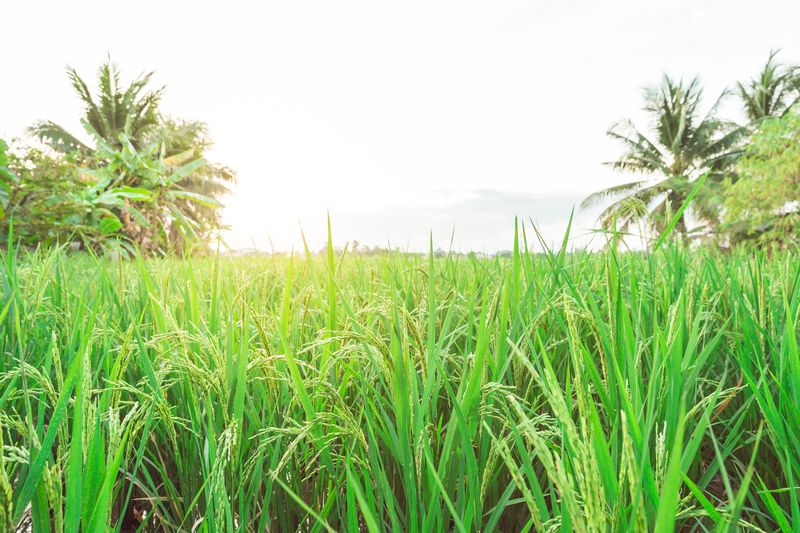
[cr. Ministry of Culture]
One of the nation’s greatest prides, Jasmine Rice almost always takes center stage at international competitions, winning accolades and prizes as the world’s most delicious rice. Known as Hom Mali (หอมมะลิ) in Thai, the name is often thought to imply that the rice has a jasmine-like scent, but in fact the aroma is closer to pandan, a fragrant tropical plant of the screwpine family. In reality, the jasmine appellation refers to the color of the grain, which is as white as the jasmine flower. The rice is popular both in Thailand and abroad and is regarded as an excellent ambassador of Thai wisdom in food and cultivation.
Thai jasmine rice is considered one of the world’s most delicious cultivars of rice and is therefore the most popular. Many Thai households prefer jasmine rice to other varieties as it is soft and very fragrant after being cooked. Most of the traditional Thai fragrant rice varieties are in the Indica group, a long grained sub-species widely cultivated in South and Southeast Asia. In Thailand, the varieties can be found in almost every region. Of 803 indigenous rice cultivars collected by the Rice Department, 202 were found to be fragrant rice. The abundance of native fragrant rice varieties characterizes the biodiversity of the region.
Jasmine rice is a monocot in the Gramineae’s Oryza family. It belongs to the group of rice grown specifically called Sativa. However, “Jasmine rice” is actually a trade name for the two popular varieties grown in Thailand – Jasmine 105 (Hom Mali 105) and RD 15 (กข 15). Both varieties are known for their fragrant aroma.
Rice Cultivation Through the Centuries
Archaeologists have discovered evidence related to rice in many areas of Thailand including at Ban Chiang Archaeological Site in the Northeastern province of Udon Thani and at Non Nok Tha in Phu Wiang District of Khon Kaen province, also in the Northeast. They found rice husks on ancient utensils dating back more than 5,000 years. They also unveiled mural paintings on the walls of Pha Mon Noi, Khong Chiam District in Ubon Ratchathani, another province in Thailand’s Northeast. The paintings portray the planting of grains similar to rice and are estimated to be around 6,000 years old. The archaeological evidence suggests that the indigenous people in the area were growing rice six millennia ago.
Thai scholars and Japanese scientists studied traces of rice husks on ancient bricks from 108 archaeological sites in 39 provinces across Thailand, and concluded that the area where Thailand is located today had been used for growing rice since the 6th century Buddhist era (537 BCE), starting with the cultivation of glutinous rice. Studies suggest that farmers began planting large grain glutinous rice around B.E. 540-570. It was only later, during the Srivijaya Empire (7th to12th century AD) that indigenous people started growing Indica rice or “Khao Jao” (ข้าวเจ้า). Historians assume this was influenced by Khmer culture because this rice belonged to the ruling class. However, it has been found that glutinous rice was still being planted during the Sukhothai period (1238-1438) and rice growing has continued and expanded ever since.
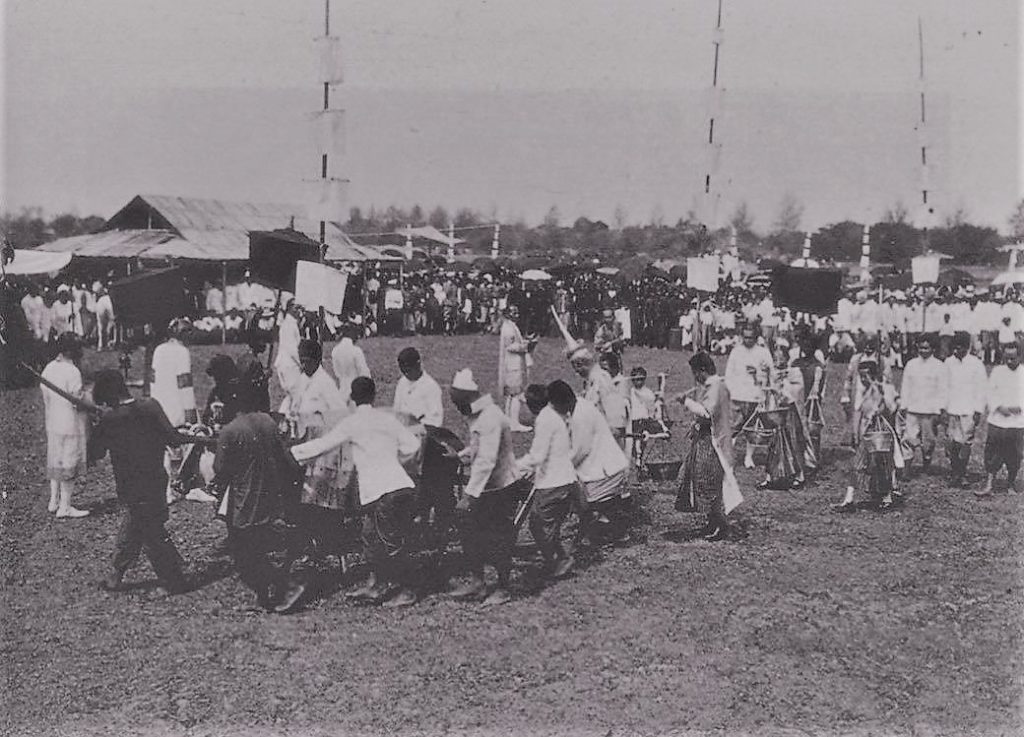
The Royal Ploughing Ceremony is an important state ceremony that marks the beginning of farming season. The ceremony is presided over by the monarch, signifying the importance of rice cultivation in Thai Society. Pictured above is a scene from the Royal Ploughing Ceremony in the past. [cr. Matichon]
Thai kings supported agriculture and granted land and farms as part of Sakdina, a system of social hierarchy in use from the Ayutthaya to early Rattanakosin periods of Thai history, similar to feudalism. The Krom Na (rice field department) was set up during the Ayutthaya period and later, in the Rattanakosin era, the government started collecting a rice tax. Rice trading grew and the grain become an important commodity in international trade in the early Rattanakosin period and has remained so until the present.
Birth of Jasmin Rice
Jasmine rice was accidentally discovered in 1945 by Mr. Jaroon Tanthawut, a farmer in Laem Pradu sub-district of Chon Buri’s Phanat Nikhom District. As in common practice amongst farmers, Mr. Jaroon set aside the seeds of this new fragrant variety for planting the following year and named the new rice “Khao Hom Mali”.
Its quality along with its beauty — long grain, curled-up tips, a clear, glossy exterior, and fragrance when cooked attracted many farmers. Six years later in 1951, Khun Thip, a village headman (Kamnan) of Tha Thong Lang sub-district took the seed to grow in Chacheongsao’s Bang Kla district. He later handed the seed to an agriculture district officer named Suntorn Seehanoen and the “Hom Mali” rice was sent for growing in an experimental paddy field in Lop Buri in 1953. The experiment was a success and the seeds then travelled to the North and Northeast of Thailand.
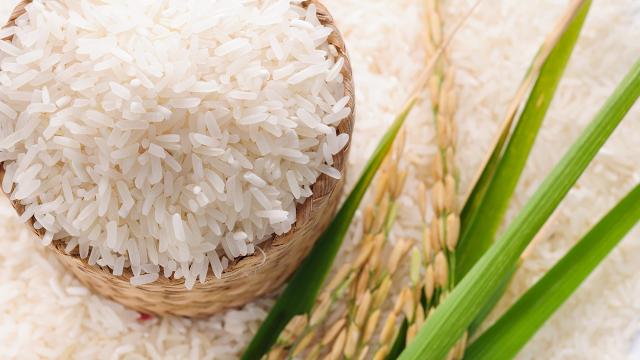
[cr. Thairath]
According to a comparison of rice varieties from all regions, the Hom Mali rice was most suitable for cultivation in Isaan, as Thailand’s Northeastern region is known, which showed the best results across controlled plots all over the region. In 1959, the Rice Species Consideration Committee under the Ministry of Agriculture approved the variety and named it “Khao Dawk Mali 105” (white jasmine 105) rice and started distributing the seeds to farmers. Two years later, Surin province’s rice experiment center began distributing the new rice variety, which quickly increased in popularity and became the mainstay of the rice grown in the Thung Kula Ronghai area of the Northeast, covering 3,200 sq. km. over five provinces.
Central to Thai Meals and Culture
Thai rice plays a major role in supporting the economic system at the family, national, and regional levels. Known as the rice bowl of the region, Thailand is also one of the leading exporters of rice. But rice is not just the staple of the country, it is also a central part of Thai culture.
There are many legends about the origin of rice. Each story reminds people that every grain of rice is valuable and should not be thrown away. It also reflects the way of life and culture of the people, and is associated with traditions, rituals, and beliefs. Thai people worship the rice goddess called Mae Phosop (แม่โพสพ), Mother Goddess of Rice, which is considered the spirit or soul of rice. It is believed that worshipping the goddess has been part of Thai culture since pre-historic times.
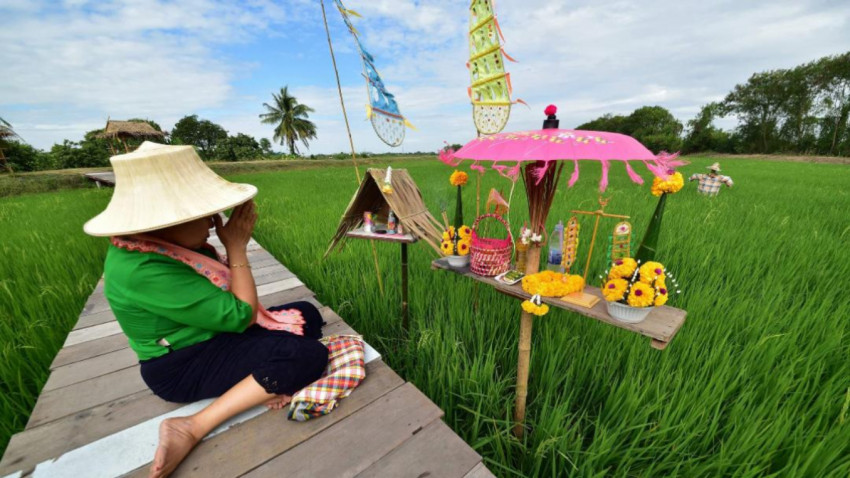
A farmer performs soo khwan khao ceremony in worship of the Mae Phosop [cr. bangkokbiznews.com]
Thailand also has a number of festivals directly linked to rice culture, among them the Bun Bang Fai festival (rocket festival) celebrating the coming of the rains prior to the planting season; Hae Nang Meaw (cat parade), a community ritual praying for rain before the start of the growing season; Liang Phee Ti Na (paying respect to the ghosts of the paddy fields to ask for production) and Su Kwan Khao (the harvest season ceremony); and the chanting of Katha Pla Chon (snakehead fish spell) and Phraya Khan Khak (toad prince) to ask for rain. The rituals continue into the harvest season with Kwan Khao Boon Khun Lan, which celebrates and gives thanks for an abundant harvest, and the Thet Maha Chaat, sermon on story of Lord Buddha’s past life – a ritual worshiping of ancestral spirits.
These celebrations and festivals related to the rice and rice cultivation calendar underline the intrinsic connection and relationships between man and rice, the staple that sustains life and community.
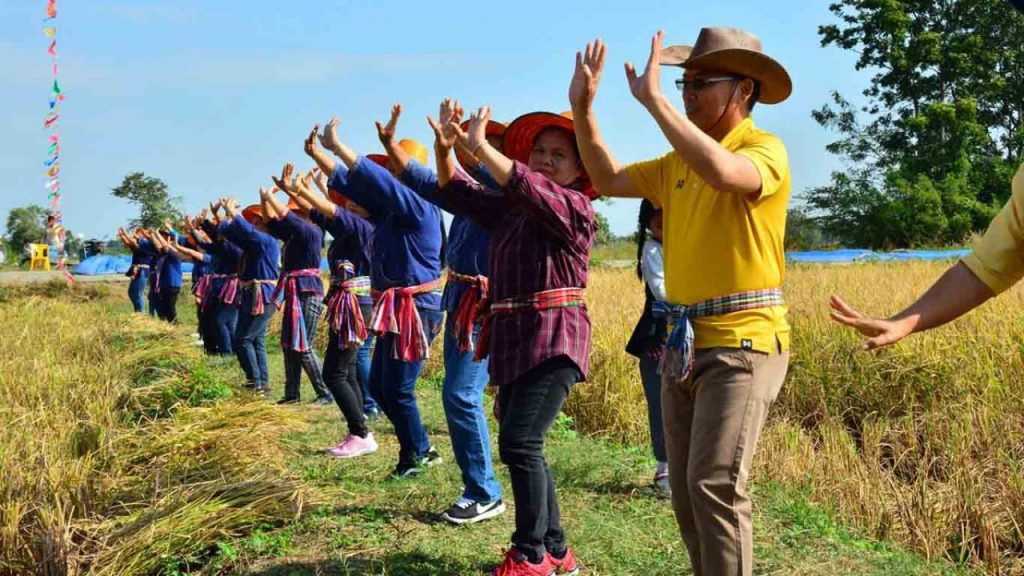
Locals dance and sing in the fields during harvest [cr. 77kaoded.com]
Rice in the Present Context
Nowadays, jasmine rice is very popular both in Thailand and abroad. Almost half of Thailand’s annual rice exports of 5 million tons is jasmine rice. Standards set by the Ministry of Commerce, the Ministry of Agriculture and Cooperatives, as well as international regulations, are applied to meet the regulations of rice production for direct export.
Processed food using jasmine rice continues to be developed to satisfy the demands of the modern consumer. The products are available in various forms, including instant rice (quick cooking rice), ready-to-eat packed rice, and nutrient-enriched rice.
The development of rice cultivation technology has also helped producers achieve export goals. While most production methods have been modified to meet market demand on an industrial scale, some farmer groups have maintained their way of life and traditional methods, opting instead for chemical-free sustainable farming and the growing of organic jasmine rice. These farmers have formed their own communities and today make up a strong alternative agriculture network. The move has taken rice cultivation back to its roots based on nature, local philosophy, and wisdom. By returning to the traditional ways, fertility has returned to the land. The groupings and networks have also helped many smallholder farmers get out of debt as production costs have dropped.

A Thai meal with rice [cr. Bloggang]
Consumers too have benefited as they can enjoy non-toxic and quality rice. These small groups of farmers are lauded for helping to bring back traditional values, way of life, and the connection between man and rice. A retired farmer put it this way: “Cultivation of rice is the cultivation of life from one life to another. Growing rice helps to calm the mind”.
There can be no doubt that from ancient times to the present, man and rice have been mutually dependent and inseparable. The same holds true for rice and Thai culture.
………………….
Reference
Oasjessada, Pattanun. Khao Hom Ma Li Jark Vi Tee Su Sed Ta Kit Sai Tarn Hang Chee Vit Khun Ka Hang Wat Ta Na Tum [The economic and cultural significance of Jasmine Rice]. Watthanatham Journal: Department of Cultural Promotion, vol. 53, no. 4, October-December 2014, p. 4-16. Available at http://magazine.culture.go.th/2014/4/culturemag2014-4/assets/basic-html/index.html#5.
Mo Ra Dok Bhumi Pun Ya Ar Harn Karn Kin Tee Pen Sing Bong Chee Tarng Bhumi Sard Thai Khao Horm Ma Li [Jasmine Rice: An Intangible Heritage and A Geographical Indication of Thailand]. Intangible Cultural Heritage. Available at http://ich.culture.go.th/index.php/en/articles/942—–m-s.


